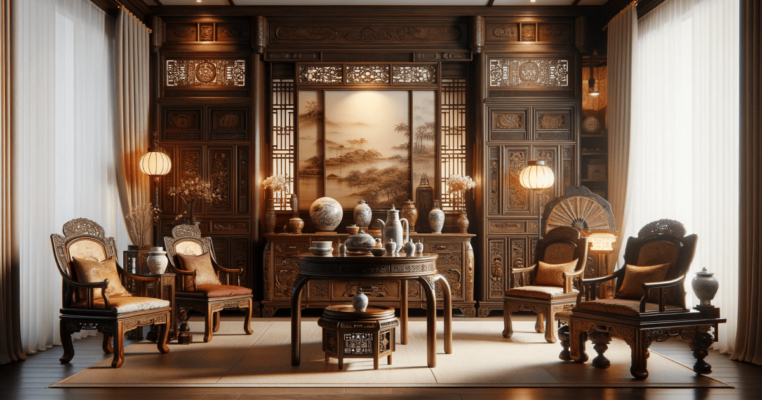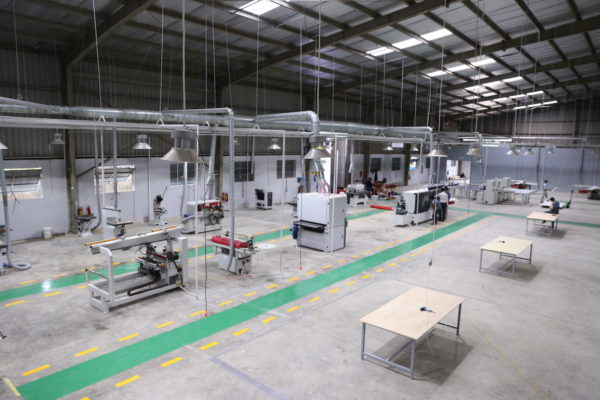Step into the world of timeless beauty and rich history as we embark on a journey to explore the exquisite Antique Vietnamese Furniture Collection.
We’ll delve into the captivating allure of traditional Vietnamese craftsmanship, offering a glimpse into the heritage that continues to inspire furniture enthusiasts worldwide. Join us on this exploration of elegance and legacy, where each piece tells a story, and HawaExpo 2024 plays a significant role in celebrating this exceptional artistry.
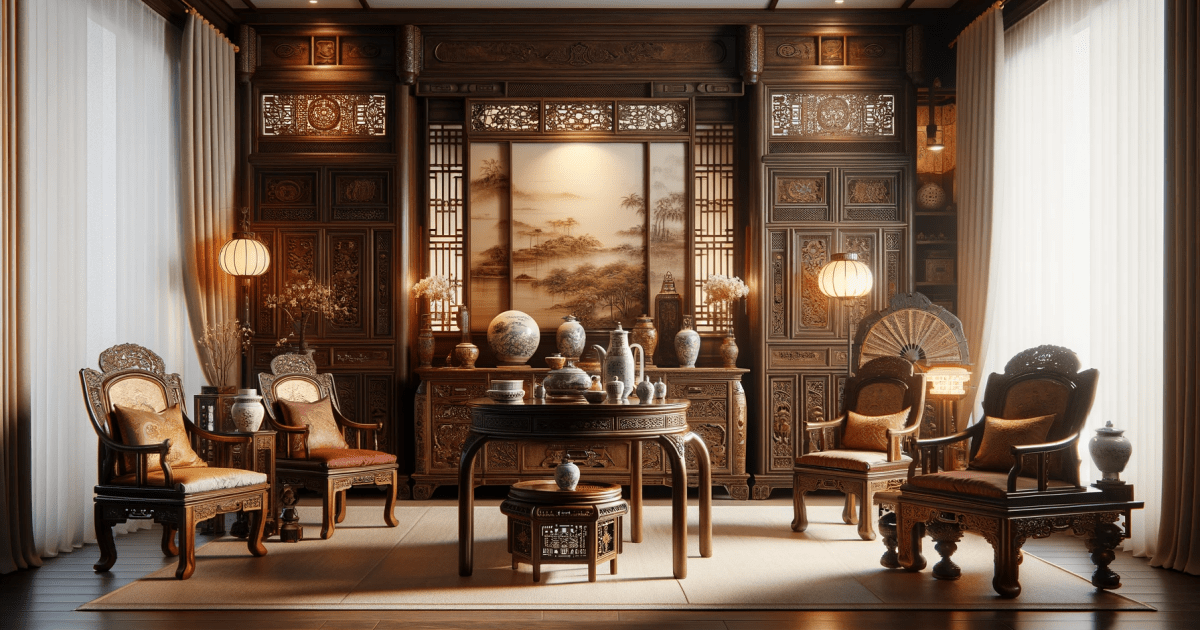
How to identify antique furniture?
Antique Vietnamese furniture brings a unique charm and historical depth to any space. Identifying authentic antique pieces, however, can be challenging but rewarding. This guide offers insights into recognizing true antique furniture.
Look at the Materials Used
Antique Vietnamese furniture often boasts an array of wood types due to the high cost of premium materials. Craftsmen would strategically incorporate less expensive woods in less visible areas to manage costs while preserving overall aesthetics.
To distinguish a genuine antique from a reproduction, inspect less conspicuous parts like the back, underside, or drawer interiors.
Look for variations in wood color and grain, which indicate the use of secondary woods. If the entire piece is made from a single wood type or features manufactured materials like plywood, it is unlikely to be an authentic antique.
Look for Dovetailing
Dovetailing, a traditional furniture construction method used for centuries, is commonly found on cabinet and drawer sides, offering insights into a piece’s age.
Its absence may indicate modern construction, though it’s important to note that reproduction pieces may also feature dovetailing. To assess authenticity, inspect dovetail lines and edges: handcrafted joints show irregularities, while machine-made ones have perfectly straight lines, indicating mass production.
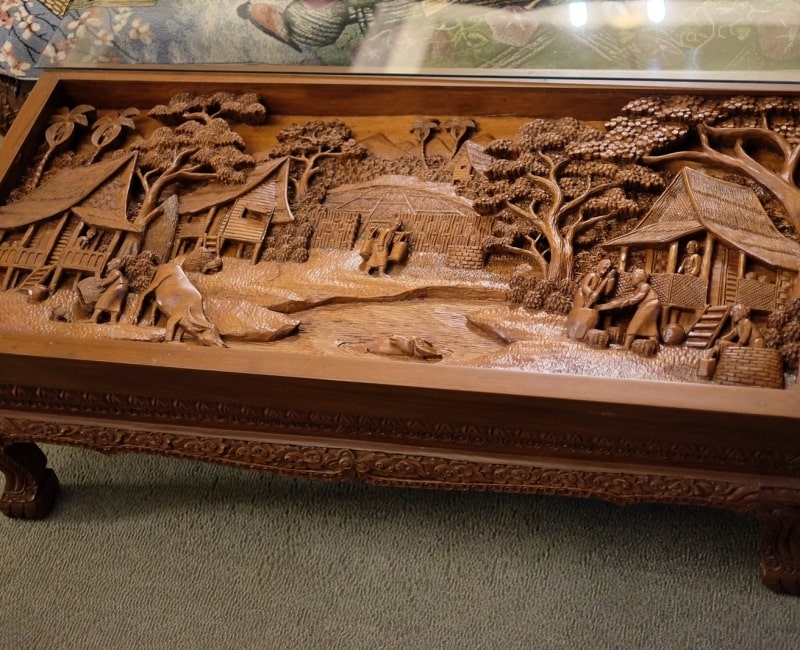
The Condition of the Wood
The wood’s condition reveals much about your furniture’s age. Surprisingly, a lack of marks and too-perfect carvings can indicate that the furniture is not antique. Consistent color, flawless carvings, absence of patina, and modern screws are signs of newer pieces.
True antiques often display imperfections from handmade craftsmanship, including signs of shrinking that cause splits and seam separation, resulting in slightly irregular shapes and wonky furniture, which aids in identification.
Inscriptions, Tags or Manufacturer’s Imprints
Seeking maker’s marks is a reliable indicator of antique Vietnamese furniture. Examine labels, stamps, or manufacturing tags underneath, on the back, or in drawers. These marks reveal the manufacturer, place of production, and often the manufacturing year. Be cautious of aged-looking labels, as they can be counterfeited.
Signs of Use and Aging
Older furniture often shows wear and tear like chips, dents, repairs, and aged drawer runners, reflecting years of use. However, these signs can be faked in reproduction pieces to create an aged appearance. Distinguishing between them is possible—reproduction items tend to have consistent, unnatural wear patterns
If you remain uncertain about whether your furniture is a true antique or a reproduction, seeking an expert appraisal is a prudent step. Experts possess the knowledge to assess its authenticity and determine its market value.
Popular Antique Vietnamese Furniture
Crafting antique Vietnamese furniture requires a keen eye for selecting specific types of wood. These carefully chosen woods play a pivotal role in capturing the timeless beauty and enduring quality of antique pieces. Below are commonly used antique Vietnamese furniture items and the types of wood typically employed in crafting them.
Trường Kỷ (Vietnamese antique tables and chairs)
Antique wooden tables and chairs, more affectionately known as “trường kỷ“, have their origins dating back to ancient China. This is quite understandable for Vietnam, with over 2000 years of history and being under Chinese rule for centuries.
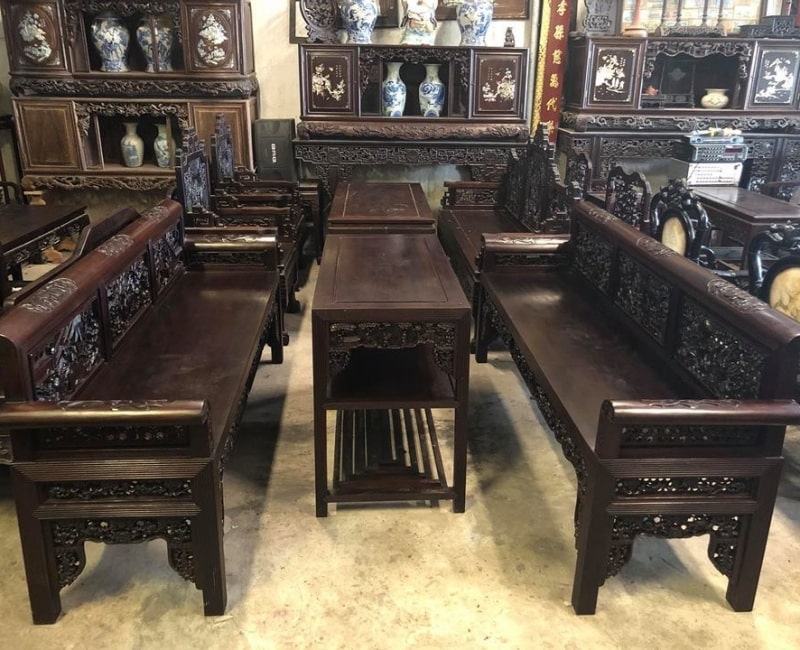
These exquisite antique trường kỷ wooden furniture sets are renowned for their remarkable durability, with a lifespan of up to several hundred years. The key to their longevity lies in the selection of exceptional wood materials such as Techicai Sitan, Santai wood, Rosewood, Mahogany, and Ironwood.
All of these wood materials belong to the top-tier group in Vietnam. That’s why we still have the privilege of preserving these exquisite antique trường kỷ furniture sets to this day.
Sập gụ (Vietnamese antique wooden furniture)
“Sập gụ” also known as “sập gỗ” or “phản gỗ,” is commonly referred to by our elders. Typically, “sập gụ” is placed with great reverence in the center of a home, often paired with a “Tủ chè,” creating a holistic space that embodies the distinctive beauty of Northern Vietnam.
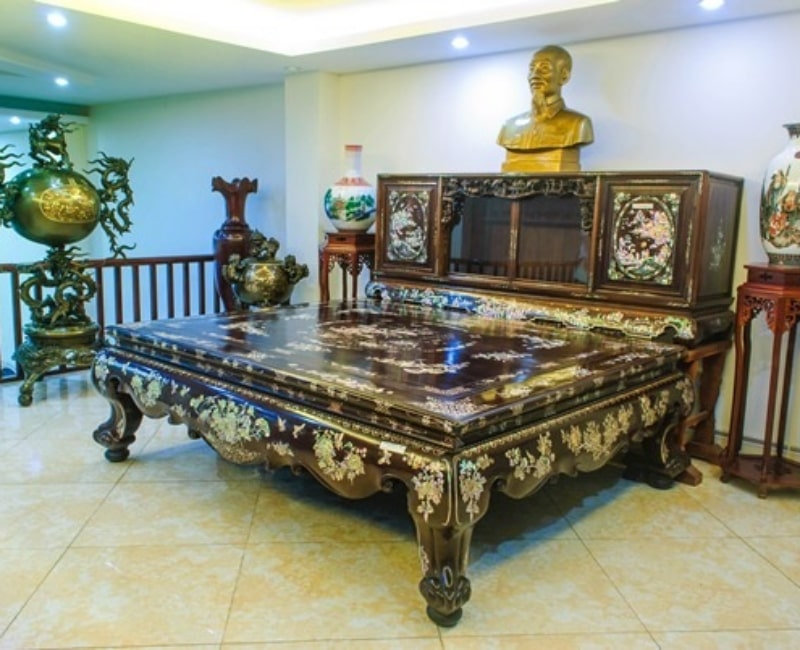
To enhance its elegance and grandeur, “sập gụ” can be adorned with intricate mother-of-pearl inlay, adding an eye-catching touch. “Sập gụ tủ chè” – A characteristic living space in Northern Vietnamese households.
Sập gụ serves various purposes, such as welcoming guests into the home, hosting feasts, enjoying tea, playing cards, or providing a place to relax and sleep. It remains a common and iconic piece of furniture in the households of Northern rural Vietnam.
Sập gụ is made entirely from premium natural wood materials, including fragrant wood, ebony, rosewood… with the most common being those crafted from mahogany wood.
Tủ chè (Vietnamese antique Showcase Cabinet)
A “tủ chè,” or Vietnamese antique Showcase Cabinet, is a piece of furniture used for displaying items such as fine wine bottles, tea sets, or storing important family possessions to protect them from insects or dust.
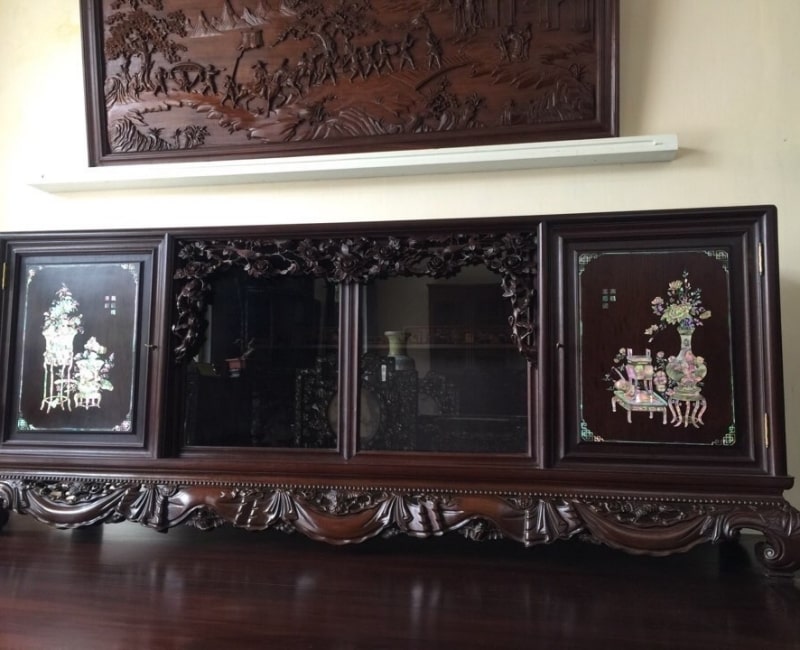
Notably, the top surface of the cabinet is often used as an ancestral altar and is typically placed in a prominent location. Showcase cabinets can be made from various types of wood, including ironwood, rosewood, but the most common choice is still mahogany.
Mahogany is a precious wood known for its durability, resistance to termites, warping, fine grain, flexibility, robustness, and the ability to withstand intricate carving without splitting. Mahogany typically has a rich dark brown or light yellow color, which can darken to deep brown over time. Regular cleaning of mahogany furniture keeps it shiny, resembling polished horn. The distinct color and properties of mahogany are fundamental characteristics of “tủ chè”.
Discover more:
- Vietnamese Craftsmanship: Handcrafted Furniture and Souvenirs
- Vietnam Furniture Expo Information: Navigating Visa, Hotel, and Travel for HawaExpo 2024
Tủ chùa (Vietnamese antique Cabinet)
Tủ Chùa or Pagoda Cabinet, is a type of cabinet deeply ingrained in Vietnamese art and culture, often crafted and perfected by skilled artisans from traditional craft villages.
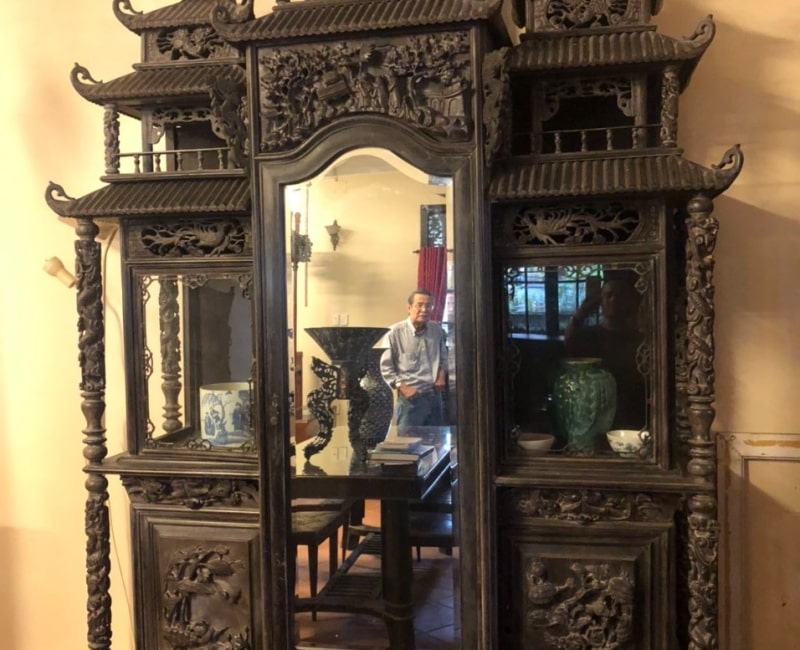
When mentioning “tủ chùa khảm ốc” (inlaid Pagoda cabinet), one cannot overlook the exquisite artistry of the artisans skilled in inlay techniques. To master this method, artisans must possess craftsmanship and years of experience to intricately carve and inlay even the most rudimentary shells into sharp, captivating pieces.
These cabinets often take on the form of a pagoda, hence the name “Pagoda Cabinet,” reflecting the influence of pagoda architecture on their design.
Hoành phi câu đối (Vietnamese wooden antique wall hangings)
“Hoành phi câu đối” is an antique wall hanging decoration in Vietnam, typically displayed in prestigious and revered places, such as places of worship. The term “Hoành phi” (Chinese: 橫扉) consists of two parts: “hoành,” meaning horizontal, and “phi,” meaning display or exhibit. Essentially, “Hoành phi” refers to horizontal calligraphy or painting.
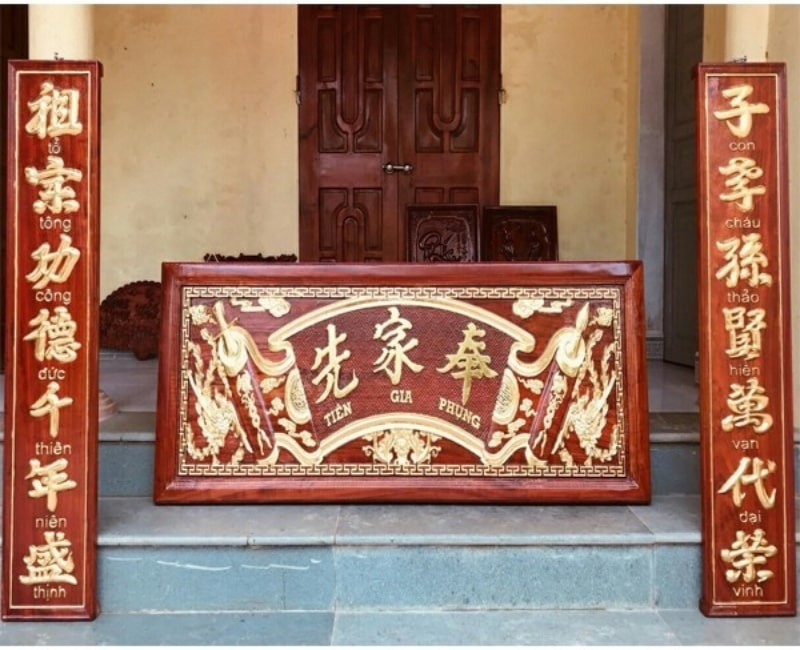
On a “hoành phi,” you’ll often find 3-4 large Chinese characters, gilded with gold leaf or painted in gold or red. It is hung high and slightly tilted forward for easy viewing.
Typically, the “hoành phi” is placed in the central position. Depending on the worship space, 2 or 3 “hoành phi” may be hung together. For example, a family altar may have one “hoành phi,” while a clan temple or a larger temple may display 2 or 3 “hoành phi” side by side.
These Vietnamese antique items are often collected and displayed in homes that reflect Vietnam’s rich cultural and historical heritage
Brands Manufacturing Antique Furniture in Vietnam
Vietnam has emerged as a focal point for crafting exceptional antique furniture, with a growing number of brands dedicated to preserving the nation’s heritage through their commitment to traditional techniques and sustainable practices. In this exploration, we’ll uncover the prominent names shaping the Vietnamese antique furniture industry.
LA ART JOINT STOCK COMPANY
Hall: Connect Hall
Booths: B19,B20
Information: LA ART was established with the mission of promoting the value of traditional craft villages. Taking lacquer as the main materials, LA ART focuses on three main areas: (i) Souvenirs; (ii) Corporate gifts; (iii) Spiritual Fine arts. LA ART distinguishes itself by designing unique products, paying meticulous attention to every detail, and ensuring quality control in each stage to ensure the perfection of the products.
Laart’s handicraft products are made by Vietnamese artisans. Products on lacquer are the main products of the Company, 100% handmade by hand through many elaborate and meticulous stages.
Key export markets: Vietnam
Key products: Living room furniture, Dining room furniture, Others
Certificates: Others
Read more: https://hopefairs.com/company/la-art-joint-stock-company
TU DUY HANDICRAFT CO., LTD

Hall: Connect Hall
Booths: B27,B24
Information: Tu Duy Handicraft specializes in manufacturing and trading exquisite handicrafts such as jewelry, decorative items, and food tools made from horn, bone, and wood.
Products are popular in markets such as Taiwan, France, Greece, Japan, and the US. With over 30 years of experience, expertise encompasses jewelry, accessories, ebony chopsticks, and more..
Key export markets: Vietnam
Key products: Others
Certificates: Others
Read more: https://hopefairs.com/company/tu-duy-handicraft-co-ltd
THINK OUTSIDE CO.,LTD
Hall: [UPDATING]
Booths: [UPDATING]
Information: Think Outside, founded by Aaron Jackson in 1998, is the visionary behind remarkable hand-crafted sculptures, décor, and furniture, perfect for homes, gardens, or as cherished gifts. Every product from Think Outside is a labor of love, meticulously designed with impeccable attention to detail and a commitment to integrity, all aimed at bringing joy into people’s lives.
With a team of over 300 dedicated artisans, Think Outside has grown from strength to strength, serving reputable home, garden, and gift retailers across Australia, Europe, Asia, and the USA. The company’s design philosophy centers around the use of recycled and sustainably sourced natural materials, including metal, wood, rubber, and stone.
Key export markets: USA, Japan, South Korea, UK, Canada, Australia, France, Germany, Others
Key products: Outdoor & Garden furniture, Home Accessories & Handicrafts, Others
Certificates: SMETA
Read more: https://hopefairs.com/company/think-outside-co-ltd
The above-mentioned manufacturing brands serve as valuable points of reference when exploring the world of Antique Furniture in Vietnam.
The brands dedicated to crafting Antique Furniture in Vietnam are not just creators of exquisite pieces; they are custodians of tradition and bearers of culture. Their commitment to preserving heritage and infusing it with modern elegance is a testament to Vietnam’s rich craftsmanship.
HawaExpo 2024 presents a golden opportunity for Antique Vietnamese furniture brands to connect with their target audience and expand globally.
“Go pro, go global” – Brands can showcase their timeless creations, network with international clients and partners, and elevate their profiles.
This event is where Antique Vietnamese furniture brands can make a lasting global impact, contributing to the enduring legacy of their craft.
Join us at HawaExpo 2024 and be a part of this timeless journey, where heritage meets innovation, and the world discovers the elegance of Antique Vietnamese furniture.
Register for visit

HAWAEXPO 2024 – THE LARGEST NATIONALLY ENDORSED EXPORT FURNITURE FAIR IN VIETNAM
- March 6 – 9, 2024; SECC – Saigon Exhibition and Convention Center, 799 Nguyen Van Linh, Tan Phu, District 7, Ho Chi Minh City, Vietnam
- March 7 – 9, 2024; White Palace – Pham Van Dong, 588 Pham Van Dong, Hiep Binh Chanh, Thu Duc District, Ho Chi Minh City, Vietnam
Hotline: +84 987 980 859 | [email protected]
Website: www.hawaexpo.com/
Follow fanpage or download HawaExpo app for the latest news: https://www.facebook.com/hawaexpo


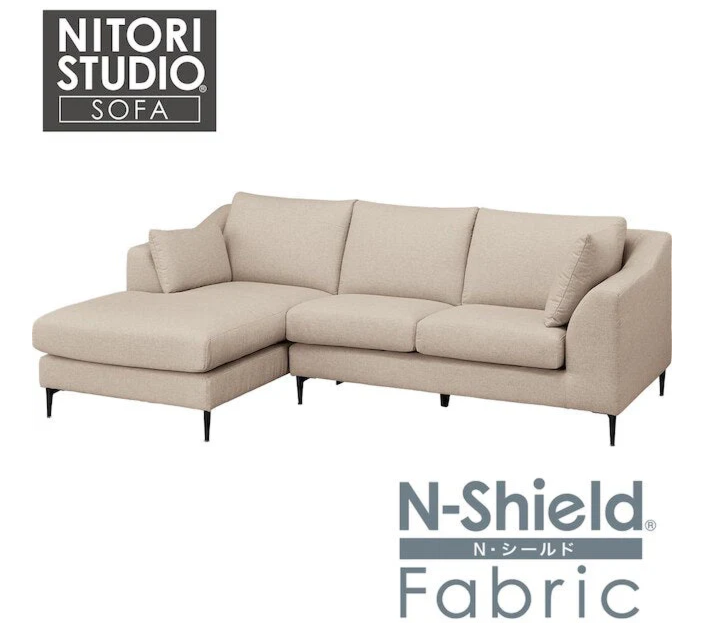
![[Workshop] Exhibition Design And Installation 15 [WORKSHOP] Exhibition Display Design & Installation](https://www.hawaexpo.com/wp-content/uploads/2022/11/E31A872C-1334-471A-91EF-34B58A24E4F7-400x400.jpeg)

